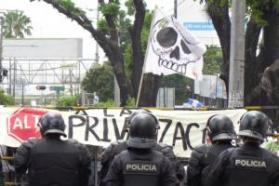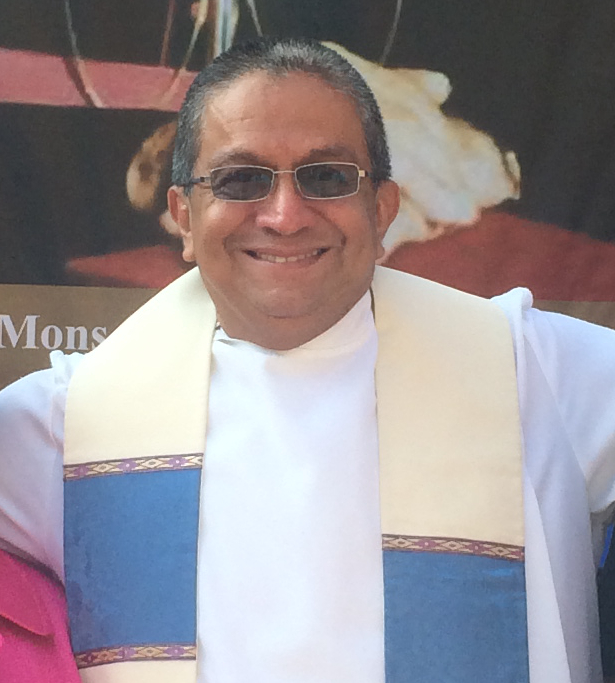The Shifting Political Landscapes of El Salvador’s 2012 Midterm Elections
CISPES Special Update (Oct.2011)
The municipal and legislative elections scheduled for March 11, 2012, will mark the first time the people of El Salvador return to the polls since the historic presidential elections of 2009 when they voted to end centuries of right-wing rule and elected the leftist Farabundo Martí National Liberation Front (FMLN) candidate Mauricio Funes as their new president. These elections are also the first elections in El Salvador’s history where right-wing parties are the opposition. In many ways these elections will measure the public perception of Funes’ government, the success of new social programs, and the government and the FMLN’s ability to disseminate information to the people over the noise and disinformation of the right-wing media. For the right-wing, it will determine what political party or coalition will emerge as the chief rival of the FMLN. The make-up of the Legislative Assembly that will be elected in 2012 will also determine how easily the FMLN will be able to promote legislation and reforms that will allow the Funes government to expand its social programs into structural changes. The 2012 elections will also be an experiment in new voting procedures following a series of electoral reforms—some highly controversial—brought about by the Supreme Electoral Tribunal (TSE) and the Supreme Court of Justice. The TSE, under the leadership of its FMLN president Eugenio Chicas, will implement a new residential voting system in 9 of El Salvador’s 14 departments. The new system, which will include 49% of voters, increases the number of voting centers and relocates them for increased accessibility. In contrast to the previous system in which people were assigned to voting centers by last name (sometimes requiring travel of up to 25 miles to vote), voters in the 9 selected departments will be reassigned to voting centers based on proximity to their homes. The new residential system is expected to significantly increase voter turnout and serve as a deterrent to the past fraudulent practice of right-wing parties bussing outsiders in to vote. While the pilot program does not include the capital of San Salvador this year—where more than 37% of the population lives—Chicas hopes to expand residential voting to a national level by the 2014 presidential elections. Other changes to how Salvadorans will vote and who can run for public office have also been brought about by Supreme Court sentences issued over the past year, amidst criticisms from the FMLN and social movement organizations that the Court was overstepping its role and attempting to legislate through rulings. One of these rulings required the Legislative Assembly to create a mechanism by which independent candidates can run for Legislative Assembly seats, but not mayors, despite the fact that the Constitution of El Salvador states that political parties “are the only instrument to exercise representation of the people within the Government.” Prominent women’s groups have noted that due to lack of resources fewer women will be able to launch independent campaigns. Similarly, other analysts have declared that the measure favors the political right due to the high concentration of wealth in the mostly right-wing upper classes. When the ban on individual candidates was first struck down last August, Funes himself raised concern that, if elected, independent candidates might respond to the interests of their financiers and not the public, as well as concern that candidates could potentially be financed by organized crime. Despite these concerns, the binding nature of Supreme Court rulings required the Legislative Assembly to pass a law by which independents can register as candidates. Another Supreme Court ruling required the Assembly to reform the way legislative deputies are elected. The 84 seats in the Assembly are divided amongst El Salvador’s 14 departments based on population. Under the previous voting system, voters selected the flag of the party they wanted to elect and the percentage of total votes that each party received in a department (along with a complicated residual vote system that historically maintained representation of smaller parties) determined how many seats each party would be allotted within the Assembly; the seats won by each party were then filled based on a ranked list created by the party and published prior to the elections. This will change now, as the Court ruled that the names and faces of all candidates, from parties and independents, must be on the ballot and voters must have the option of selecting specific candidates. Concern has been expressed that this will negatively affect the quotas that the FMLN employs to assure that both the youth and women are adequately represented in their governing bodies. The FMLN fought in order to maintain the right for voters to choose a party flag, reiterating that voters should be able to vote in support of a party platform rather than vote in a popularity contest. Under the new voting procedure, voters can select either an individual candidate or their party’s flag. This means that ballots in different departments will be different sizes—in San Salvador alone there will likely be over 100 photos of candidates on the ballot. People have expressed concern that the complexity of the new ballots will lead to more people voting incorrectly, resulting in voter disenfranchisement as many ballots are discarded rather than counted. Analysts have also criticized the right-wing parties for stalling the approval of the 2012 elections budget, which has had major repercussions for the first-time voter population. By the time the budget was approved, the TSE had less than a month to publicly encourage people turning 18 to register to vote before the registration deadline. As a direct result, less than 15,000 of over 50,000 eligible new voters registered in time for the March elections. The map of El Salvador’s political parties has also changed since 2009. The Nationalist Republican Alliance (ARENA), following its defeat in the 2009 elections suffered major internal conflict that led to the creation of the Grand Alliance for National Unity (GANA) party by ARENA defectors. As ARENA’s support dwindles, quite a few of its mayors have jumped ship to GANA; these elections will determine the extent of ARENA’s fall as well as whether GANA is able to garner the base of support needed to win at the polls and sustain itself as a political party. The Christian Democrat Party (PDC) and National Conciliation Party (PCN), El Salvador’s oldest parties in the 2009 elections, will no longer be able to participate in elections following a Supreme Court ruling that reversed a legislative decree that kept them alive despite not earning the minimum number of votes in the 2006 elections to legally continue as a party. While both parties are in the process of registering under new names, flags, and colors, it is unlikely they will be able to maintain the dwindling support they had before the Court ruled to dissolve them. The FMLN was the first party to announce its candidates and legislative and municipal platform, making history for the highest percentage of female candidates (45% of the total) in the country. It has already begun mobilizing its massive base of support to begin door-to-door campaigning. One important race in the upcoming elections is for the mayor of San Salvador where current ARENA mayor, Norman Quijano is running for reelection against FMLN candidate Jorge Schafik Handal, son of the late Schafik Handal, former FMLN guerilla commander and presidential candidate in 2004. Some analysts speculate that if Quijano is reelected that he will be poised as a potential ARENA presidential candidate for 2014. Quijano’s municipal beautification campaigns, that have forcibly displaced thousands of informal vendors in violent confrontations, have won him pretty solid support from the capital’s middle class; however, unfulfilled campaign promises and his failure to address the needs of the city’s youth and poor majority have left many looking to other candidates. Races in other areas of the country that voted for the FMLN for the first time in 2009 will also prove important litmus tests of public approval for the first leftist government and its social programs. Another tactic of the right wing has been the claim that, now in government, the FMLN is attempting to take over government institutions. This has been the loudest with regards to the Supreme Electoral Tribunal, which under the leadership of FMLN magistrate Eugenio Chicas has managed to begin many reforms (like residential voting) that have the potential to end years of low voter turnout favorable to right-wing candidates. A decision made by Chicas and two other TSE magistrates to carry out the Supreme Court ruling and dissolve the PDC and PCN parties brought on absurd accusations of abuse of power from the right-wing. These new claims that the left is now committing fraud, after years of documented electoral fraud by the right wing, are likely to continue, particularly in the case of an FMLN victory in 2012. The right-wing began a smear campaign over a year ago saying the FMLN government was a failure, while the FMLN has recently begun television advertisements with the slogan “the change has begun” and showing improvements in the public healthcare system, investment in the agricultural sector, and improvements in education. The 2009 electoral victories of the FMLN in legislative, municipal, and presidential elections proved that the FMLN had the support to defeat the right-wing in spite of overt fraud and under electoral rules designed by the and for the benefit of the right-wing since the FMLN won status as a political party in 1992. This year’s elections, with lots of last minute changes to the electoral system, has the right-wing clamoring to do whatever it can to reverse the FMLN’s 2009 electoral success. The 2012 elections will be a new experience for El Salvador; though there are many new democratic advances, the possibilities for right-wing manipulation and fraud are very high and TSE President Chicas has begun the calls for international observation of the process.

 "I am a CISPES supporter because continuing to fight for social justice and a more people-centered country means continuing the dream and sacrifice of thousands of my fellow Salvadorans who died for that vision.” - Padre Carlos, New York City
"I am a CISPES supporter because continuing to fight for social justice and a more people-centered country means continuing the dream and sacrifice of thousands of my fellow Salvadorans who died for that vision.” - Padre Carlos, New York City

